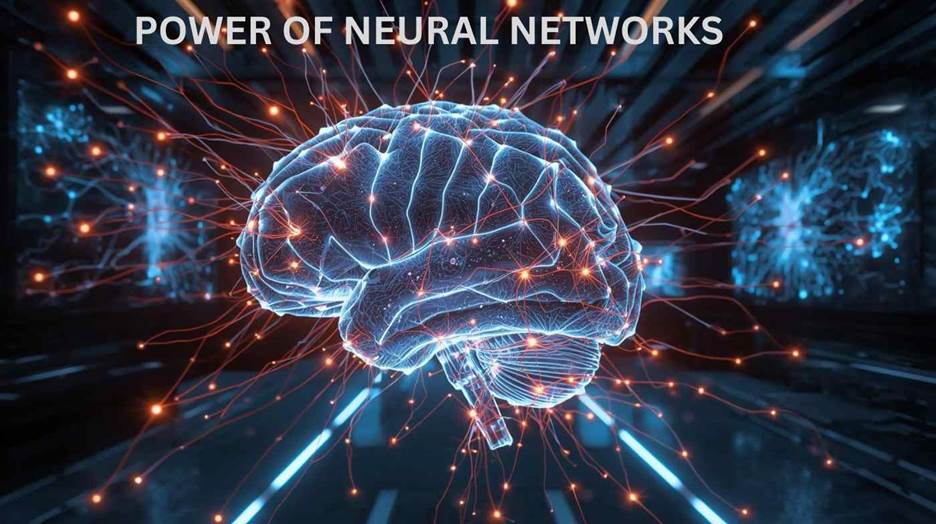In the digital age, technology continues to evolve at an astonishing pace, and one of the most fascinating developments is the rise of Neural Networks. Modeled after the human brain, these systems are at the heart of artificial intelligence and machine learning. They enable machines to recognize patterns, process data, and make predictions in ways that were once thought impossible. Today, Neural Networks play a crucial role in areas such as healthcare, finance, transportation, and even entertainment, shaping the future of innovation.
Table of Contents

What Are Neural Networks?
Definition and Core Idea
Neural Networks are computational systems inspired by the structure of biological neurons in the human brain. They consist of layers of interconnected nodes, or “neurons,” that process information. Each connection has a weight, which adjusts as the system learns, allowing it to improve performance over time.
How They Work
When data enters a Neural Network, it passes through multiple layers. Each layer analyzes the input and transforms it into meaningful patterns. The final output can be anything from identifying objects in an image to predicting future stock prices. By continuously adjusting weights, Neural Networks become more accurate and intelligent with experience.
Benefits of Neural Networks
Pattern Recognition
Neural Networks excel at detecting complex patterns in large datasets. This ability makes them ideal for image recognition, voice processing, and fraud detection.
Adaptability and Learning
Unlike traditional algorithms, Neural Networks improve with time. They adapt to new data, making them suitable for dynamic environments such as online recommendations or real-time language translation.
Automation of Complex Tasks
Through Neural Networks, businesses can automate tasks that once required human intelligence. This saves time, reduces costs, and minimizes human error.
Versatility Across Fields
From predicting diseases to powering self-driving cars, Neural Networks offer solutions in almost every industry, making them one of the most versatile technologies available today.
Applications of Neural Networks
Healthcare
In healthcare, Neural Networks are used for medical imaging, drug discovery, and personalized treatment plans. They help doctors diagnose diseases earlier and with greater accuracy.
Finance
Financial institutions use Neural Networks to detect fraudulent transactions, forecast market trends, and assess credit risks. These systems process vast amounts of financial data quickly and effectively.
Transportation
Self-driving cars rely heavily on Neural Networks to analyze road conditions, detect obstacles, and make split-second decisions that ensure passenger safety.
Entertainment
Streaming platforms and gaming companies leverage Neural Networks to personalize user experiences. They recommend shows, adjust difficulty levels, and enhance interactive storytelling.
Education
Neural Networks also play a growing role in education by powering adaptive learning systems that adjust to each student’s needs, ensuring more effective outcomes.
Challenges of Neural Networks
High Computational Requirements
Training Neural Networks demands significant computing power and storage capacity. This can be expensive, especially for small organizations.
Data Dependency
For accurate results, Neural Networks require massive amounts of high-quality data. Inaccurate or biased data can lead to flawed outcomes.
Lack of Transparency
One major challenge is the “black box” nature of Neural Networks. While they provide results, it is often difficult to understand how they arrived at those conclusions.
Ethical Concerns
The widespread use of Neural Networks raises ethical issues, including privacy concerns, bias in decision-making, and job displacement in certain industries.
The Future of Neural Networks
Integration with Artificial Intelligence
The future of Neural Networks lies in their deeper integration with AI systems. Smarter, more autonomous machines will emerge, capable of complex problem-solving.
Real-Time Applications
Advancements in computing power will allow Neural Networks to handle real-time data processing on a larger scale, benefiting industries like healthcare and cybersecurity.
Edge Computing and Accessibility
As hardware becomes smaller and more efficient, Neural Networks will be deployed on everyday devices like smartphones and home assistants, making the technology more accessible.
Contribution to Sustainability
Neural Networks will also play a role in addressing global issues. From climate modeling to optimizing energy consumption, they can contribute to a more sustainable future.
Human Perspective on Neural Networks
Collaboration Over Replacement
Rather than replacing humans, Neural Networks complement human intelligence. Professionals use these systems to process complex data, while human judgment ensures ethical and creative decision-making.
Skill Development
The rise of Neural Networks encourages workers to upskill in areas such as data analysis, programming, and AI ethics, preparing them for future careers in technology-driven industries.
Conclusion
Neural Networks represent one of the most groundbreaking innovations in modern technology. Their ability to learn, adapt, and recognize patterns has transformed industries ranging from healthcare to entertainment. While challenges such as computational demands, ethical concerns, and data dependency remain, the benefits of Neural Networks far outweigh the drawbacks. As technology continues to advance, these systems will become more powerful, transparent, and accessible, shaping a smarter, safer, and more connected future for humanity.